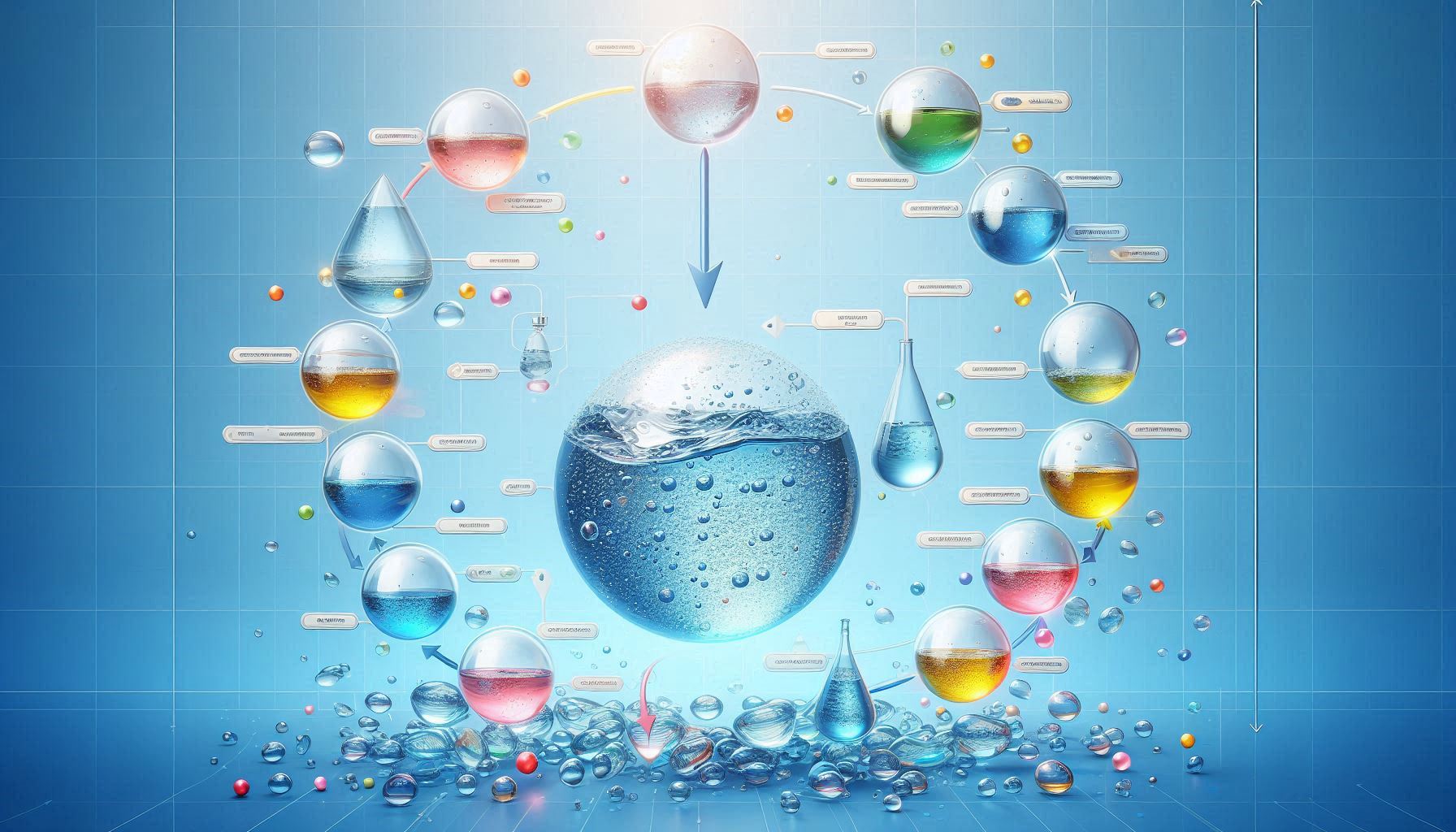While researching oil, I came across something called surface activity, which has the property of mixing water and oil, which do not mix. It seems that activity refers to the mixing of the interface, which is the boundary between water and oil. Both water and oil have useful properties, and when these properties become prominent, they become heterogeneous, but surface activity seems to work by connecting these heterogeneous substances together.
Hydrophilic + Lipophilic
Surfactants are molecules that look like matchsticks, with one end being hydrophilic (compatible with water) and the other end being lipophilic (compatible with oil), making them an amphiphilic substance. They gather at the interface between water and oil, where they can come into contact with both water and oil, and take on a spherical structure called a micelle that encases the oil. Because the outside of these spheres is hydrophilic and the inside is lipophilic, they encase the oil in the water and separate it into small particles, a process known as emulsification.
The number of molecules that make up a micelle is called the association number, and when the association number is 30 or less, micelles are formed with the number of faces of a regular polyhedron called a Platonic solid (4, 6, 8, 12, 20). This cannot be explained by conventional theory, and these mysterious micelles are called Platonic micelles. There seems to be some kind of law behind this.
aids digestion
Oil is a highly efficient source of calories, but dispersing this oil into small micelles makes it easier to digest and absorb. In mammals, bile acids produced in the liver emulsify fats and increase the reaction surface area that comes into contact with digestive enzymes. Similarly, microorganisms also produce surface-active substances called biosurfactants, which break down surrounding oils into smaller pieces to make them easier to absorb.
In addition, a surfactant called lecithin, which is found in soybeans, sunflower seeds, sesame seeds, etc., seems to help the animals that eat them digest the lipids and promote the scattering of seeds in their feces. The function of breaking down oil into small particles is important.
make a membrane
In addition to the micelle structure, surfactants also form a double membrane called a phospholipid bilayer by linking together structures such as [outside] hydrophilic-lipophilic [inside] [inside] lipophilic-hydrophilic [outside]. The membrane is formed by crushing and stretching a micelle that has nothing on the inside. Lecithin, found in soybeans, is a type of phospholipid. This double membrane appears to form the membranes of cell membranes and small organelles, so without surfactants, living organisms would not be able to survive.
Protects against bacteria
Surfactants can form membranes, but at the same time, they can also disperse (emulsify) and dissolve membranes made of lipids (oils). Bile acids, which help digest fats, destroy bacteria in the small intestine and bile duct, but bacteria grow in the large intestine, where bile acids cannot reach. Bile acids are important.
In addition, saponin, a surfactant produced by legumes and cucurbits, is said to defend against bacteria and insects due to its bitter taste and surfactant properties, and also inhibits enzymes, making them difficult to digest and therefore difficult to eat.
The properties of surfactants are such that sometimes they can create membranes but sometimes they destroy them, and sometimes they can aid digestion but sometimes they make digestion difficult, so they act in completely opposite ways depending on the conditions they are active on. Hydrophilicity + lipophilicity is an amazing property.
Reduce surface tension
When a surfactant is placed in water, the hydrophilic side gathers on the water side and the lipophilic side gathers on the air side, creating tiny depressions on the water surface that inhibit the force that tries to spread the surface.
The surface tension that tends to gather the water into a round shape weakens, causing the water to spread out thinly and spread evenly on the surface of the leaves, which makes it easier for the stomata to open and transpiration to occur. When transpiration becomes stronger, the ability to absorb water from the roots also becomes stronger, so generating surfactants on the surface of the leaves seems to be a countermeasure when there is little rain.
In addition, surfactants that come out from the surface of the seeds dissolve in water, lowering the surface tension and helping water penetrate the seeds, thereby promoting germination.
Surfactant is amazing
The properties of surfactants themselves seem simple, but it’s amazing how many functions are created by connecting different substances. Both water and oil have amazing properties, but when they join forces, even more amazing chemical reactions occur. Surfactants that connect different substances are amazing. The mechanisms of living organisms on Earth are amazing.


